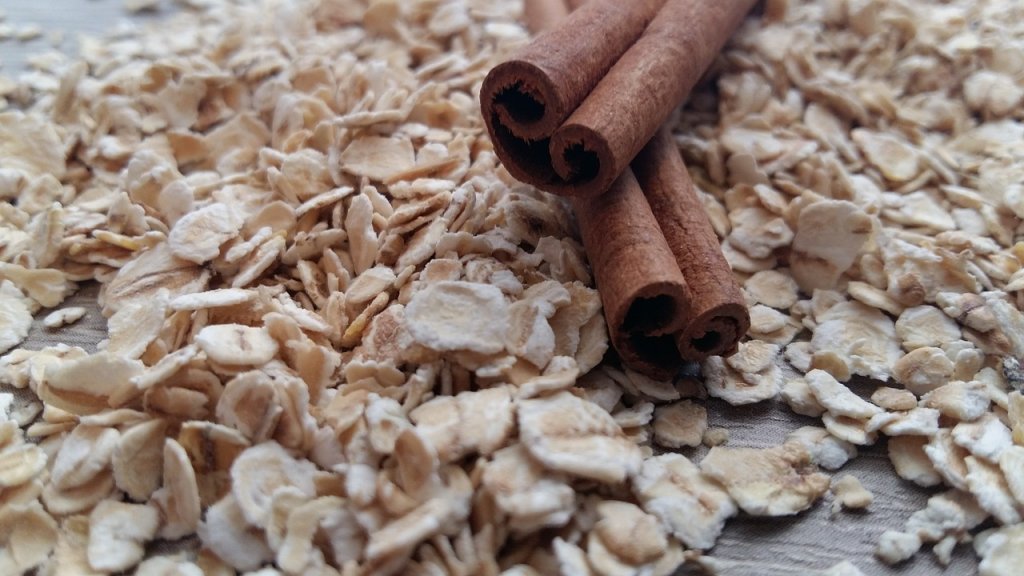
Oatmeal and gout: Should oatmeal be part of your gout diet? In other words, does it increase uric acid? We look into oatmeal’s purine and sugar content to answer that question. And its overall health benefits.
Does Oatmeal Increase Uric Acid?
Before we get into whether or not oatmeal increases uric acid, let’s remind ourselves of the importance of diet (in general) and gout…
Gout and Diet
When trying to figure out which foods should be included and which should be excluded from your gout diet the first thing you should look for is purine content.
Why? Because the purines that occur naturally in our foods are chemical compounds that metabolize into uric acid. And high uric acid in the bloodstream (hyperuricemia), out of which urate crystals form in the joints and surrounding tissue, is the root cause of gout.
Another uric acid-raising trigger for gout is sugar — especially fructose — so we need to look at the food’s sugar content as well.
Then we need to ensure that the food in question is a healthy food; there’s no sense in adding a gout-safe food to your diet if it’s otherwise unhealthy and could cause other health issues.
So now let’s take a look at oatmeal…
What is Oatmeal?
Here’s a description from Wikipedia:
Oatmeal is a type of coarse flour made of hulled oat grains (groats) that have either been milled (ground), steel-cut, or rolled. Ground oats are also called “white oats”. Steel-cut oats are known as “coarse oatmeal”, “Irish oatmeal” or “pinhead oats”. Rolled oats can be either thick or thin, and may be categorized as “old-fashioned”, “quick”, or “instant”, depending on the cooking time, which is shortened by the size of the oats, precooking, and sometimes the addition of enzymes.
The term oatmeal is also used in the U.S. and parts of Canada to describe a popular oat porridge made from either ground, steel-cut, or rolled oats.
Both types of rolled oats may be eaten uncooked, as in muesli, or may be cooked with water or milk to make porridge. In some countries, rolled oats are eaten raw or toasted with milk and sugar, sometimes with raisins added, like a basic muesli. The term “oatmeal” sometimes refers to a porridge made from the bran or fibrous husk as well as the oat kernel or groat. Rolled oats are often used as a key ingredient in granola breakfast cereals (in which toasted oats are blended with sugar and/or nuts and raisins) and granola bars.
Rolled oats are also used as an ingredient in oatmeal cookies, oatcakes, British flapjack bars and baked oatmeal dessert dishes such as Apple Brown Betty and apple crisp. Oats may also be added to foods as an accent, as in the topping on many oat bran breads and as the coating on Caboc cheese. Oatmeal is also used as a thickening agent in thick, savoury Arabic or Egyptian meat-and-vegetable soups, and sometimes as a way of adding relatively low-cost fibre and nutritional content to meatloaf.
Let’s look at oatmeal’s purine and sugar content:
Purine and Sugar Content of Oatmeal
Purines
Most purine tables give oats / oatmeal as being between 94-100 mg uric acid per 3.5 oz (100 g) serving.
Note: Foods with less than 100 mg uric acid per 3.5 oz (100 g) are generally considered “low” in purines, while those within 100-200 mg uric acid per 3.5 oz (100 g) are usually considered to have “moderate” amounts of purines. Anything over 200 mg is considered “high” and must to be avoided.
So oatmeal is recognized as having a low to moderate purine content.
This is good news for us gout sufferers since it means oats / oatmeal is generally safe to eat as far as it’s purine content is concerned.
Sugar
In terms of it’s sugar content, oatmeal has hardly any sugar: around 0.5 g of sugar per 3.5 oz (100 g) serving. So it passes its sugar test.
But — and there’s always a “but” isn’t there? — there’s a problem with commercial oatmeal products with flavorings and other additives. These have added sugars and some brands can have particularly high sugar levels, as much as 22 grams in at least one case. So stay away from them. You can prepare your own oatmeal with fresh ingredients — see the video at the end of this article.
How Nutritious and Healthy is Oatmeal?
Here’s what Healthline.com says about oats:
They are a good source of carbs and fiber, including the powerful fiber beta-glucan.
They also contain more protein and fat than most grains.
Oats are loaded with important vitamins, minerals and antioxidant plant compounds. Half a cup (78 grams) of dry oats contains:
- Manganese: 191% of the RDI
- Phosphorus: 41% of the RDI
- Magnesium: 34% of the RDI
- Copper: 24% of the RDI
- Iron: 20% of the RDI
- Zinc: 20% of the RDI
- Folate: 11% of the RDI
- Vitamin B1 (thiamin): 39% of the RDI
- Vitamin B5 (pantothenic acid): 10% of the RDI
- Smaller amounts of calcium, potassium, vitamin B6 (pyridoxine) and vitamin B3 (niacin)
This is coming with 51 grams of carbs, 13 grams of protein, 5 grams of fat and 8 grams of fiber, but only 303 calories.
This means that oats are among the most nutrient-dense foods you can eat.
So you can see that oatmeal is a really healthy option. It’s one of the healthiest of all grains.
Health benefits include:
- improved insulin sensitivity (beta-glucan)
- lower blood sugar levels (low glycemic index)
- lower cholesterol levels (high soluble fiber content)
- reduced blood pressure (antioxidant plant compounds)
- weight control (beta-glucan helps reduce appetite)
- reduced risk of heart disease (oats reduce both total and LDL cholesterol)
- relieves constipation in the elderly (oat bran, the fiber-rich outer layer of the grain)
- aids immune response (beta-glucan, again)
So oats / oatmeal passes all three tests; purine content, sugar content and health benefits.
OK let’s summarize:
Oatmeal and Gout
So, can oatmeal be added into your gout diet?
The answer is yes, but…
YES oatmeal can be added to your diet, BUT avoid the flavored kinds which are usually chock-full of sugar. You can sweeten your oatmeal with fruit and nuts, even some raw honey. Or try the recipe in the following video.
Stick to rolled and steal-cut oats and, since oats / oatmeal sits astride the low to moderate purine content scale, try to limit your intake to 1/2 to 2/3 cup of dry oatmeal per day. Then just add water or low-fat milk, fruit, nuts, etc. That makes a bowl per day, as a healthy breakfast for example.



